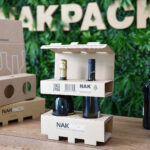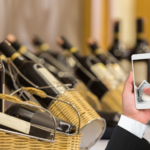Why are express mail certifications like UPS® so important? What is a certification and why it is essential to use certified / approved packaging? Do you know how many times a box falls during a shipment, how high and how? Check out all the answers in this article.
Properly protecting a package (and even if it is a box of wine bottles) during the transport phase is difficult, it is necessary to understand the risks to which the packaged product will be exposed during transit through a typical distribution system such as SDA, BRT, TNT, GLS, UPS, FedEx, DHL, etc. It is therefore necessary to keep in mind the environment in which our wine’s crate is likely to travel. For example automatic sorting systems, forklifts or manual movements.
Analysis, Tests and Research in Logistics
In 1996, a working group called Measurement and Analysis of the Distribution Environment (MADE) directly managed by the Institute of Packaging Professionals (IoPP) conducted a comprehensive study to explore better the issues related to logistics circuits. It should be noted that at the time, a typical logistic process was not the one of today. At that time, couriers transported mostly goods between companies (B2B). It was only later, with the huge expansion of e-commerce, that logistics had to deal with an incredible acceleration.
First of all, never assume that the transport service will automatically and independently take all the necessary measures to protect your products with the most appropriate packaging. It is up to the merchant to make sure that the goods are traveling in the best possible and safest manner.
When studying the critical aspects of a supply chain, it becomes immediately clear that it is essential to know the average height and average number of drops of a package during the shipping phase.
Have you ever wondered how high your packaging can fall? Various tests have been done on this issue over the years. The longest and most complex is the one with the code name FPL-22 made between 1959 and 1977.
It is clear that the sorting systems of today’s hub centers are very different from those of the past, but we are facing another recent test of 13 US high technology companies. The results of the tests are quite close from those of the last century. One could therefore consider that certain dynamics do not change or at least do not take into account the technological modernization of sorting centers. And this leads us to confirm that most breaks occur because of the delicate handling of packaging by staff. The problem is solely and exclusively human.
An interesting study conducted in 2006 by Hewlett-Packard (EMEA MADE European Shipping Drop / Impact Study) on 24 shipments to the United States revealed that up to 188 fall events between 15 and 106 centimeters can occur in one shipment.

The percentage of potentially damaging impacts during a shipment is approximately 18%. They are the ones who usually generate the breakage of goods and our bottles. It is also interesting to examine the types of fall in detail. Have you ever wondered how your parcels were falling? By analyzing the two following graphs, the data obtained gives a very clear picture of what happens during a shipment.
The collected data often show that package labels such as “Fragile / Handle with care” or “Top face / This side up” have very little influence on the height of the fall or on the orientations of the impact suffered. Essentially, operators in the logistics sector do not take labels into account!
UPS Certification Tests
So, it is clear that the two main weaknesses of a package are the lower part and the edges. For this reason, probate testing tends to test and emphasize these points. A certification test such as that of UPS® (according to the strictest international standard ISO22248) tends to reproduce the reality in the most realistic way possible.
The UPS® certification test simulates a vertical impact by dropping 10 times by a predetermined height of 80 cm for a package containing glass, with a well-defined distribution including at least all the facades with a flat fall and three falls the edges. A single fall is considered in a corner. Below you will find the official UPS® sequence.
Breaking even one bottle during the fall sequence invalidates the entire test and does not certify the package.
Nakpack® was among the first in Europe to carry this important certification. Ask to be contacted by one of our sales representatives by completing our inquiry form. Find out why we are so confident!
Share this article
Did you like this article? Share it now!






